 Technology
Technology  Technology
Technology  Humans
Humans 10 Everyday Human Behaviors That Are Actually Survival Instincts
 Animals
Animals 10 Animals That Humiliated and Harmed Historical Leaders
 History
History 10 Most Influential Protests in Modern History
 Creepy
Creepy 10 More Representations of Death from Myth, Legend, and Folktale
 Technology
Technology 10 Scientific Breakthroughs of 2025 That’ll Change Everything
 Our World
Our World 10 Ways Icelandic Culture Makes Other Countries Look Boring
 Misconceptions
Misconceptions 10 Common Misconceptions About the Victorian Era
 Mysteries
Mysteries 10 Strange Unexplained Mysteries of 2025
 Miscellaneous
Miscellaneous 10 of History’s Most Bell-Ringing Finishing Moves
 Technology
Technology Top 10 Everyday Tech Buzzwords That Hide a Darker Past
 Humans
Humans 10 Everyday Human Behaviors That Are Actually Survival Instincts
 Animals
Animals 10 Animals That Humiliated and Harmed Historical Leaders
Who's Behind Listverse?

Jamie Frater
Head Editor
Jamie founded Listverse due to an insatiable desire to share fascinating, obscure, and bizarre facts. He has been a guest speaker on numerous national radio and television stations and is a five time published author.
More About Us History
History 10 Most Influential Protests in Modern History
 Creepy
Creepy 10 More Representations of Death from Myth, Legend, and Folktale
 Technology
Technology 10 Scientific Breakthroughs of 2025 That’ll Change Everything
 Our World
Our World 10 Ways Icelandic Culture Makes Other Countries Look Boring
 Misconceptions
Misconceptions 10 Common Misconceptions About the Victorian Era
 Mysteries
Mysteries 10 Strange Unexplained Mysteries of 2025
 Miscellaneous
Miscellaneous 10 of History’s Most Bell-Ringing Finishing Moves
Top 10 Bizarre Premature Obituaries
Obituaries have fascinated me since I was old enough to read a newspaper. I love reading the tales of lives lived – everyone from ordinary neighbors to the famous. Everyone has a life and everyone has a story to be told, when that life ends. The only thing we want to get right, other than the facts, is the obituary itself. And the single most important requirement is that you actually be dead when the obituary appears. Surprisingly, that mistake happens more times than one would think. Whether the person has faked their death, been declared dead when they were still alive, or mistaken to have died, sometimes news of a death is premature.
All of the examples listed here are people who have been declared dead, and the death has appeared in an obituary or otherwise been announced (or in one case, surmised) to the media and/or relatives and family. Though some may have appeared in previous lists, I tried to focus on those examples that were a bit less notorious (such as the multiple death reports for Gerald Ford, Bob Hope and Pope John Paul).
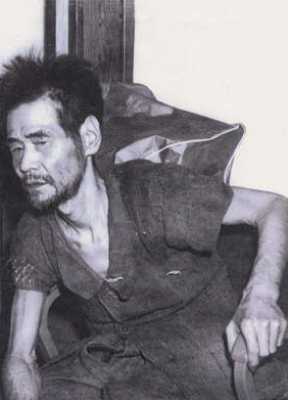
Though his story has been included in other lists, I wanted to include Yokoi’s tale of survival because I remember, as a teenager, reading about this Japanese soldier coming out of the jungle, still believing World War II was being fought. It was shocking at the time to believe anyone would continue to hide and continue to fight a war, for 28 years after the war had ended. But it was true.
During World War II, it was considered to be dishonorable for a Japanese soldier to surrender and be taken prisoner. So when the United States liberated the island of Guam, in 1944, ten Japanese soldiers refused to surrender and instead fled into the jungle to live and fight another day. They thought the news of the Japanese surrender was propaganda, and refused to believe it. The end of WWII came and went in 1945, and the ten remained in hiding. Eventually, seven of the ten went back to civilization, but three remained in the jungle and, eventually, two of them would die from starvation. In 1972, 28 years after he and his nine comrades went into hiding, the lone survivor emerged from the jungle. But it was not of his own free will. Two local fishermen surprised the last Japanese soldier on the island, captured him, and brought him out.
Shoichi Yokoi had finally stopped fighting for the Japanese Imperial Army. He had long ago been given up for dead, and his obituary listed him as killed in action. When he returned he was treated as a national hero in Japan. However, he felt he had not served the Emperor and army adequately, saying “It is with much embarrassment that I have returned alive” – which instantly became a popular saying in Japan. Amazingly, Yokoi was the third from the last Japanese soldier to emerge from hiding. Two more soldiers, Hiroo Onoda and Teruo Nakamura, continued the fight and did not emerge until later.
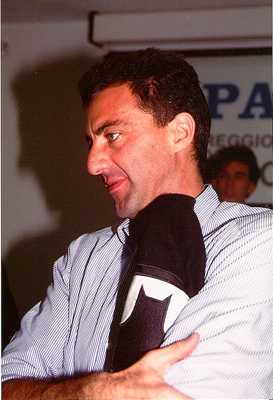
While it is not known if there was ever an actual obituary written for Luca Barbareschi, his story and that of the film Cannibal Holocaust is so weird I decided to include it in this list, because for a time, many actually believed Luca Barbareschi was dead.
The late 1970s and early 1980s was a great time for horror films. An American Werewolf in London, The Thing, Halloween, The Texas Chainsaw Massacre, and so many more great horror films came out during this time period. But in 1980, one film came out that was so horrific, officials investigated to determine if the graphic gore in the film was a little too graphic. In fact, they wanted to know – was it real?
Well before The Blair Witch Project, Italian director Ruggero Deodato made Cannibal Holocaust. Cannibal Holocaust was supposed to be actual “recovered documentary footage.” In the film, supposed documentary film makers enter the Amazon jungle to film indigenous tribes, and go missing. Two months later, another crew find the “lost footage” which shows, among other things, people being impaled on stakes and lots of other super gory film action.
Ten days after it was released, director Deodato was arrested by police and charged with obscenity, and the film was banned in Italy, Australia, the United Kingdom and other countries. Even more startling, due to the rumors that the actors had actually been killed in the making of the film, Deodato was held on charges of murder. In 1981, a French magazine published an article questioning whether Cannibal Holocaust was a snuff film, or if the actors themselves had actually been murdered during the making of the film. While this may have been exactly what Deodato wanted in the way of press coverage for his film, he didn’t think people would actually believe he killed his actors. But they did. Deodato did not help matters because in order to give the public the impression that the main actors had been killed, he had the actors sign contracts ensuring they would not appear in TV, commercials, or films, for one year after the film’s release, in order to promote the idea that the film was truly the recovered footage of missing documentarians.
Luca Barbareschi was one of four actors whom the Italian police believed had been murdered while making the film. Deodato was eventually able to reach Barbareschi and the other actors, and voided the contracts so they would appear. He had all of them come onto an Italian television show to convince the authorities that they were, in fact, alive.
However, the authorities were not yet finished with Deodato. Although Deodato was exonerated for murder, the courts cited him for real animal cruelty law violations (multiple animals had been harmed and killed during the filming of Cannibal Holocaust). Deodato, the producers, screenwriter, and the studio representative each received a four-month suspended sentence after they were convicted of obscenity and violence. Deodato would fight in the courts for three additional years to get his film unbanned.
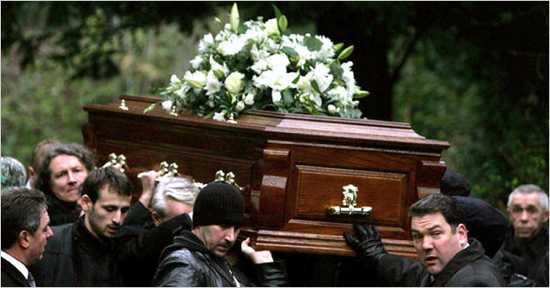
Singer and songwriter Warren Zevon knew he was dying. He had been diagnosed with mesothelioma, a rare form of cancer of the lining of the lung or abdomen caused by exposure to asbestos. Zevon knew he had about a year to live. Having had a long career that started out in the 1970s during the California rock era, that produced artists such as Jackson Browne and The Eagles, Zevon half jokingly/half seriously wondered, before he died, if Don Henley would show up at his funeral (he did not).
Did you ever wonder who would show up for your funeral after you died? Well, a guy by the name of Vuk Peric did, and decided to find out. Peric lived in Serbia and decided, in 1997, to put his own obituary in the local newspaper and sent out his own funeral invitations. Watching the funeral from a distance, he walked into the services and thanked everyone for attending and then invited them to his wake. “I wanted to see people smiling at my funeral and was curious who would come” he told a local newspaper.
Five years later in 2002, Peric was offering to sell his grave and tombstone. There were no takers.
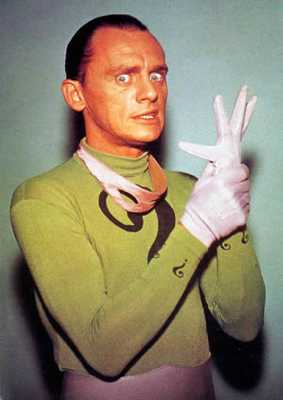
Actor, impersonator and comedian Frank Gorshin is probably best remembered for his 1960s’ performances as Riddler on the hit TV series Batman, and as Belle, the half white faced/half black faced character in the episode “Let That Be Your Last Battlefield” on Star Trek. But Gorshin almost didn’t live to create those memorable characters from 1960s’ television history. In fact, he died in 1957.
It was in 1957 that Gorshin was back home in Pittsburgh, Pennsylvania, when he received a call from his agent saying he should return to California, fast, to audition for a role in a soon to be made Clark Gable film called “Run Silent, Run Deep.” Gorshin disliked flying so he drove to California, 39 hours straight. Almost there, Gorshin fell asleep at the wheel and crashed. He suffered a serious head injury and did not wake up for four days. During that time, the Los Angeles papers announced that he had died in the accident. Gorshin never made the screen test and the part went to Don Rickles.

Imagine showing up for work one morning, a typical work day like any other, and when you arrive, your coworkers and friends are grieving about your death. This is the experience 58 year-old graphic arts teacher Terry Fergerson had in May 2006, when he arrived for work at Central Technical Vocational School in Syracuse, New York. Teachers and students were “panic stricken” at his death, and then he showed up at the school, alive and unharmed.
The previous night at around 9:17 p.m in nearby Hannibal, a head on vehicle crash had killed a man driving a red Chevrolet pickup. The victim was 59 year-old Terry L. Ferguson. In addition to the two having similar spelled last names, both drove red Chevy pickups and were of similar age. News reached the Fergerson family that their father had died in an automobile accident. Relatives and friends began calling and showing up at the house to offer condolences. Speaking about the odds of the two having similar last names, age, and truck preferences, Fergerson said, “I don’t know what the percentages are, I’m not a mathematician, but it’s pretty far out.”

Dave Swarbrick has been described as ‘the most influential British fiddle player, bar none’ and was a session player, and then member, of Fairport Convention from 1969-1979. However, Swarbrick’s health was very poor due to steadily worsening emphysema. On April 29, 1999, the British newspaper the Daily Telegraph ran an obituary describing the former singer and violinist for Fairport Convention as “a small, dynamic, charismatic figure” who could “electrify an audience with a single frenzied sweep of his bow.” There was only one problem: he wasn’t dead. In fact, two benefit concerts and a double lung transplant later, Swarbrick is still with us to this day, touring and performing on a regular basis.
As for the paper, it apologized for the ill-timed obit, which was shown to Swarbrick. His wife, Jill, said: “He read the obituary and didn’t quarrel with any of the spellings or the facts – apart from the obvious one.” The following August, Swarbrick made his first public appearance after being hospitalized – at the Cropredy folk music festival, where he took delight in signing copies of the obit for fans. “It’s not the first time I’ve died in Coventry,” he said at the time.

In June 1960, singer Brian Hyland had a huge hit with a song written by Paul Vance called “Itsy Bitsy Teenie Weenie Yellow Polka Dot Bikini.” Vance would also co write other hit songs such as “Catch a Falling Star” by Perry Como and “Playground in My Mind” which was a #2 top hit in 1973 for Clint Holmes. Vance was nominated for the Songwriters Hall of Fame in 2009. But in 2006, Vance had died. His death was reported in an obituary in The News-Times of Danbury, Connecticut, which was then picked up by the Associated Press which ran an obituary for Vance which was then reported by news outlets worldwide. Problem was, Vance was still alive.
On September 6, 2006, a former salesman and painting contractor named Paul van Valkenburgh of Ormond Beach, Florida died. The News-Times repeated Van Valkenburgh’s claim that he had written the song “Itsy Bitsy Teeny Weeny Yellow Polka-Dot Bikini” under the pen name of Paul Vance, but that he had sold his rights to the song decades earlier. Valkenburgh had convinced his wife of this many years earlier and when he died, she included the information for his obituary, believing it to be true.
Vance saw a report of his death on a local television news broadcast. He announced that he was still alive and to prove it, he showed royalty checks from ASCAP for his songwriting. Relatives and friends, shocked by the Associated Press report, had called to check on him and two racehorses he owned had been scratched from races based on the reports. Vance considered taking legal action because belief that he was dead might stop his royalty payments from arriving.

In January 2009, the eye-patch-wearing guitar player for the rock band Kansas, Rich Williams, was reported to have died. Williams’ obituary ran in a number of newspapers in the New England area and briefly appeared at the online obituary reference site – Legacy. But the real Rich Williams was still alive and rocking. The person who had died, Eric de Boer of Kingston, New Hampshire, had been impersonating Rich Williams (apparently convincingly so) for several years. Not only did de Boer claim he was Williams, he claimed he played for the band Kansas, and even that he wrote their hit song “Carry on My Wayward Son” (which was written by real Kansas member Kerry Livgren). De Boer also claimed that he joined Kansas after he returned from Vietnam where he was held as a POW. The fact that de Boer was impersonating him was known by Williams for several years. But Williams did not pursue it out of respect for de Boer’s service in Vietnam, and because he had forgotten about it. In fact, it was later determined that de Boer probably never served in Vietnam.

On April 26, 2006, a van load of students from Taylor University collided with a tractor trailer. Five of the students were killed and four others seriously injured including one who was left in a coma. Whitney Cerak was one of the five who were killed and over one thousand people attended her funeral. Meanwhile, one of the four survivors, Laura VanRyn, heavily bandaged and in a coma, was clinging to life in a hospital. Over the coming days, VanRyn would start to improve to the point where she was talking. Her boyfriend seemed to notice something odd about the way she was talking, as did her roommate. Her father became alarmed when she referred to him using a pet name he did not recognize. When she was finally able to write down her name, the name she wrote was not Laura VanRyn. It was Whitney Cerak. Only then did the parents of these two young people realize that the identities of the two girls had been accidentally mixed up. Both shared similar facial features, hair color and texture, and were of similar physical size and build. The body of Laura VanRyn had been buried in a grave with the tombstone of Whitney Cerak. Whitney Cerak fully recovered and graduated from college in 2009.
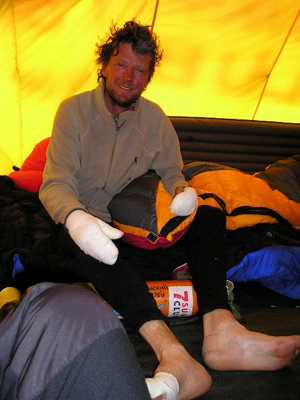
The Everest climbing season of 2006 was one of the deadliest on record. When it was over, eleven climbers were dead. The most controversial of all was that of David Sharp. Sharp arrived at Everest in 2006, and by many accounts he had the bare minimum of support and equipment necessary to make the climb. He was not attached to any large organized climbing party as are most Everest climbers. He had no climbing partners, he had no Sherpas, he didn’t even have a camera. His climbing gear was old, but adequate. He was determined to make it to the top of Everest this time even, as he told another climber, if he had to “lose more fingers and toes to do it”.;
It’s believed that Sharp reached the summit on the afternoon of May 14th, but he was too exhausted from the effort to make it down the mountain. Too weak to go further, still near the summit, he would crawl into a small cave under a rock ledge. A Sherpa stopped to see if he was alive, and he was. The Sherpa asked his name and he said: “My names is David Sharp. I am with Asia Trekking and I just want to sleep.” Though still alive, as many as forty climbers walked right past Sharp as they went for the summit, letting him sleep. By May 16th, he was dead. This outraged the climbing community and the world, leading none other than Sir Edmund Hillary to say: “The whole attitude toward climbing Mount Everest has become rather horrifying,” and “A human life is far more important than just getting to the top of a mountain.”
Ten days after Price lost his life on Everest, an Australian climber by the name of Lincoln Hall was fighting for his. Hall was an experienced climber and climbing as part of a group of climbers, one of whom, German climber Thomas Weber, was already dead. Now it appeared the climbing team was about to lose Lincoln Hall as well. Though Hall had made the summit, on the way down he became weak and disoriented and suffered high altitude cerebral edema. For hours Sherpas attempted to help Hall down the mountain and to revive him. Eventually Hall began to hallucinate and the Sherpas were ordered to descend and leave Hall, or die themselves. Reluctantly, the Sherpas did as they were told, and left Hall alone in the “death zone” of Mount Everest, believing him to be dead. Mr. Hall’s death was announced by radio and then over the Internet from the Everest base camp. Eventually Hall’s wife was informed, as was the world, Lincoln Hall was dead. Another climber killed on Mount Everest.
The next day, at above 28,000 feet, climber Dan Mazur and others were astonished when a man appeared before them as they ascended the mountain. Sitting in the snow wearing no gloves, no hat, with no oxygen, his suit unzipped and his arms out and only two feet from the edge of a shear 8,000 foot precipice, the man said: “I imagine you are surprised to see me here.” They were surprised. Surprised to see a dead man. It was Lincoln Hall and he was alive. Hall had spent an entire night alone and exposed above 28,000 feet in the death zone, something no man was supposed to have been able to survive, especially a man who had been left for dead and declared as such. It took eleven Sherpas to bring him down but Hall survived.








